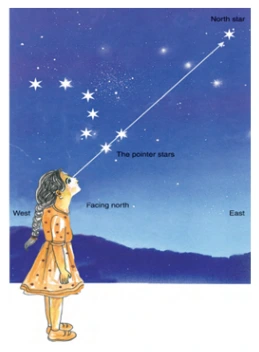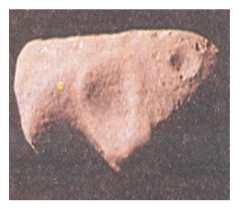![]() 25 Nov 2023
25 Nov 2023
Introduction – Discovering the Secrets of Our Solar System:
The solar system is a captivating celestial arrangement, consisting of the Sun, its retinue of planets, moons, asteroids, comets, and other celestial bodies. It offers a fascinating glimpse into the vast cosmos and our place within it. The intricate dynamics and diverse features of each solar system member provide valuable insights into the processes of planetary formation and the origins of our home planet, Earth.


ConstellationVarious patterns formed by different groups of stars are called constellations. Some examples are Ursa Major or Big Bear, Saptarishi (Sapta-seven, rishi-sages) which is a group of seven stars that forms a part of Ursa Major Constellation. We can locate the position of the Pole Star with the help of the Saptarishi. |
|
The Solar System |
||||||||
| Mercury | Venus | Earth | Mars | Jupiter | Saturn | Uranus | Neptune | |
| Distance* | 0.387 | 0.723 | 1.000 | 1.524 | 5.203 | 9.539 | 19.182 | 30.058 |
| Density@ | 5.44 | 5.245 | 5.517 | 3.945 | 1.33 | 0.70 | 1.17 | 1.66 |
| Radius # | 0.383 | 0.949 | 1.000 | 0.533 | 11.19 | 9.460 | 4.11 | 3.88 |
| Satellites% | 0 | 0 | 1 | 2 | 95 | 146 | 27 | 14 |
| * Distance from the sun in astronomical unit i.e. average mean distance of the earth is 149,598,000 km = 1
@ Density in gm/cm3 # Radius: Equatorial radius 6378.137 km = 1 % Number of Satellites as of 2023 |
||||||||
| Table 2.2: The Solar System | ||||||||


Do You Know?
|
| Terrestrial Planets | Jovian Planets |
| These were formed in the close vicinity of the parent star where it was too warm for gases to condense to solid particles. | These were formed at quite a distant location. |
| The solar wind was most intense nearer the sun, so it blew off lots of gas and dust from the terrestrial planets. | The solar winds were not all that intense to cause similar removal of gases from the Jovian planets. |
| They are smaller and their lower gravity could not hold the escaping gases. | They are larger planets. |
| Table 2.3: Difference Between Terrestrial and Jovian Planets | |
<div class="new-fform">
</div>